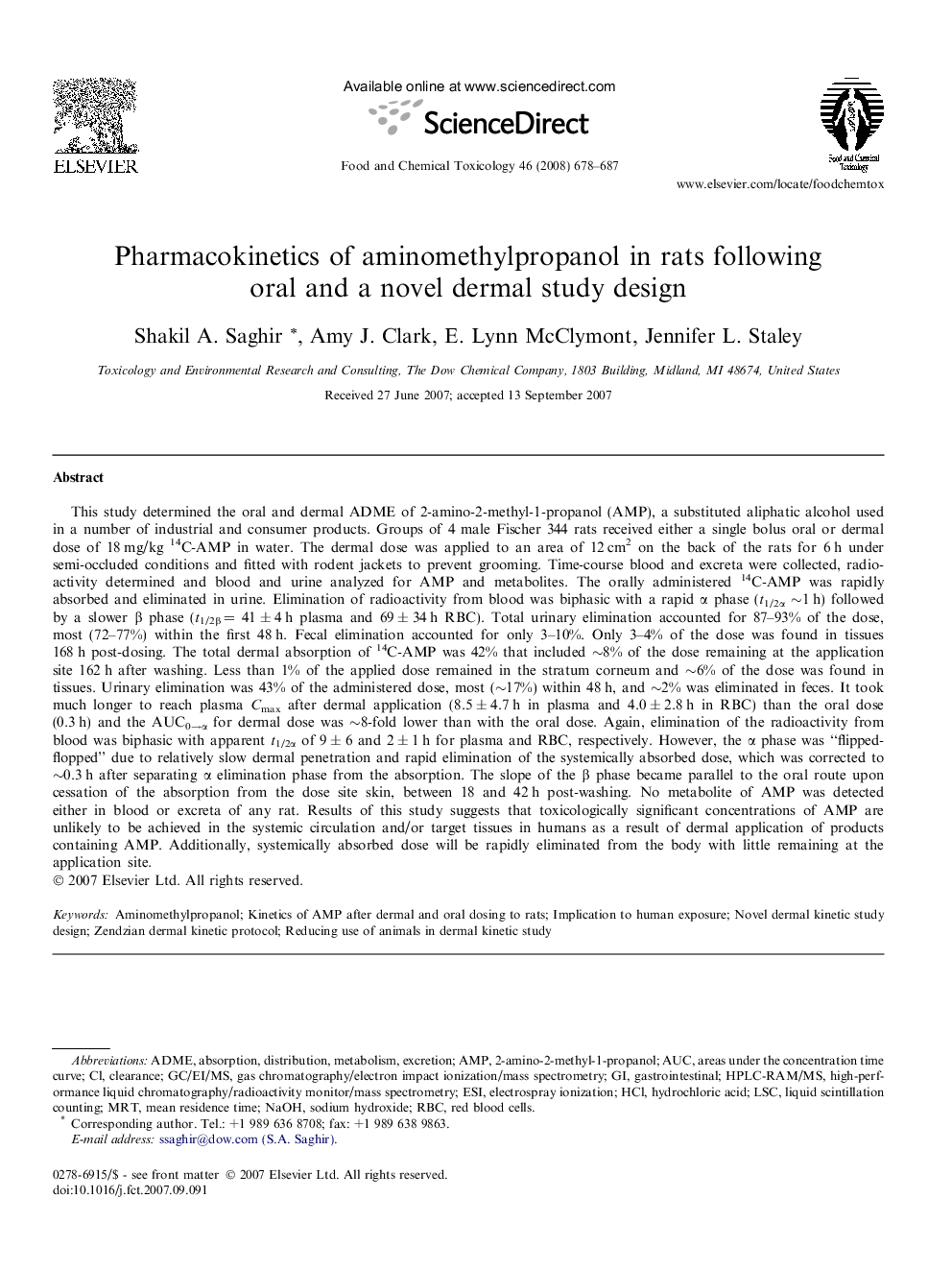| کد مقاله | کد نشریه | سال انتشار | مقاله انگلیسی | نسخه تمام متن |
|---|---|---|---|---|
| 2587115 | 1130917 | 2008 | 10 صفحه PDF | دانلود رایگان |

This study determined the oral and dermal ADME of 2-amino-2-methyl-1-propanol (AMP), a substituted aliphatic alcohol used in a number of industrial and consumer products. Groups of 4 male Fischer 344 rats received either a single bolus oral or dermal dose of 18 mg/kg 14C-AMP in water. The dermal dose was applied to an area of 12 cm2 on the back of the rats for 6 h under semi-occluded conditions and fitted with rodent jackets to prevent grooming. Time-course blood and excreta were collected, radioactivity determined and blood and urine analyzed for AMP and metabolites. The orally administered 14C-AMP was rapidly absorbed and eliminated in urine. Elimination of radioactivity from blood was biphasic with a rapid α phase (t1/2α ∼1 h) followed by a slower β phase (t1/2β = 41 ± 4 h plasma and 69 ± 34 h RBC). Total urinary elimination accounted for 87–93% of the dose, most (72–77%) within the first 48 h. Fecal elimination accounted for only 3–10%. Only 3–4% of the dose was found in tissues 168 h post-dosing. The total dermal absorption of 14C-AMP was 42% that included ∼8% of the dose remaining at the application site 162 h after washing. Less than 1% of the applied dose remained in the stratum corneum and ∼6% of the dose was found in tissues. Urinary elimination was 43% of the administered dose, most (∼17%) within 48 h, and ∼2% was eliminated in feces. It took much longer to reach plasma Cmax after dermal application (8.5 ± 4.7 h in plasma and 4.0 ± 2.8 h in RBC) than the oral dose (0.3 h) and the AUC0→α for dermal dose was ∼8-fold lower than with the oral dose. Again, elimination of the radioactivity from blood was biphasic with apparent t1/2α of 9 ± 6 and 2 ± 1 h for plasma and RBC, respectively. However, the α phase was “flipped-flopped” due to relatively slow dermal penetration and rapid elimination of the systemically absorbed dose, which was corrected to ∼0.3 h after separating α elimination phase from the absorption. The slope of the β phase became parallel to the oral route upon cessation of the absorption from the dose site skin, between 18 and 42 h post-washing. No metabolite of AMP was detected either in blood or excreta of any rat. Results of this study suggests that toxicologically significant concentrations of AMP are unlikely to be achieved in the systemic circulation and/or target tissues in humans as a result of dermal application of products containing AMP. Additionally, systemically absorbed dose will be rapidly eliminated from the body with little remaining at the application site.
Journal: Food and Chemical Toxicology - Volume 46, Issue 2, February 2008, Pages 678–687